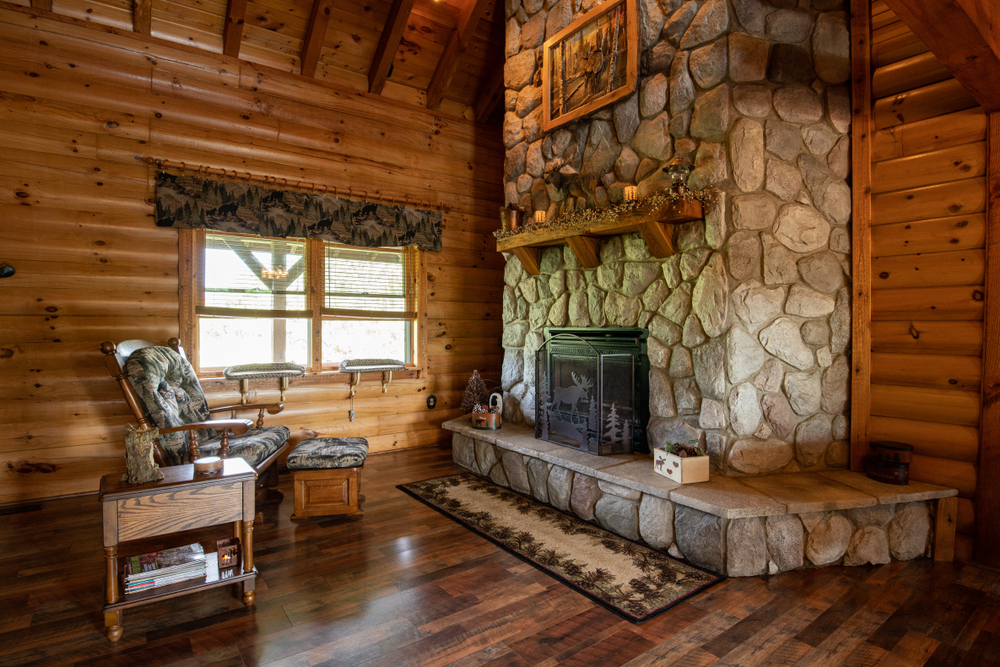Log Home Logic: Specialized Inspection Needs for Western Montana Cabins

In the heart of Western Montana, where mountain ranges cradle pristine lakes and pine forests stretch endlessly toward the horizon, log cabins stand as timeless symbols of rustic comfort and craftsmanship. These homes offer a connection to nature and a lifestyle steeped in tradition, but they also come with unique challenges that differ from conventional housing. To maintain their beauty and integrity, homeowners and buyers must understand the specialized inspection needs that log cabins require. Working with a certified inspector for log cabins in Western MT is not just recommended; it is essential for preserving both the structure and its value.
Understanding the Unique Anatomy of Log Homes
Unlike modern stick-built homes, log cabins are constructed using full or milled logs that form both the frame and the outer shell of the structure. This distinctive design brings natural insulation benefits and aesthetic charm, but it also introduces inspection challenges unseen in conventional homes. The logs themselves are the structure, insulation, and exterior finish all at once, meaning any issue within the wood directly affects the integrity of the home.
A certified inspector for log cabins in Western MT will look beyond typical inspection checkpoints like foundation cracks or roof condition. They will evaluate the logs for moisture content, evidence of insect activity, and the state of chinking or caulking between logs. In Western Montana’s climate, where long winters and significant moisture fluctuations are common, these inspections are crucial. Logs naturally expand and contract with temperature and humidity, and without proper maintenance, small issues like checking (surface cracking) or minor rot can escalate into major structural problems.
Environmental Factors that Shape Western Montana Cabin Inspections
The environmental conditions in Western Montana pose specific risks that affect log homes more acutely than other structures. The region’s freeze-thaw cycles, intense UV exposure at higher elevations, and varying precipitation patterns can all contribute to the gradual deterioration of logs over time. Inspectors trained for this environment understand how these factors interact and what warning signs to look for.
For example, the combination of moisture from snowmelt and summer humidity can create perfect conditions for fungal decay. A certified inspector for log cabins in Western MT will assess whether the cabin’s design and maintenance have mitigated these risks through proper roof overhangs, adequate drainage, and well-maintained finishes. Inadequate ventilation, especially in crawl spaces and attics, can lead to condensation buildup, another common problem in mountain climates.
Pest activity is another critical focus area. Western Montana’s dense forests are home to carpenter ants, wood-boring beetles, and other insects that thrive in damp wood. Inspectors must differentiate between old damage and active infestations, as well as identify whether the treatment methods used are safe and effective. The subtle signs of pest intrusion, fine sawdust, small exit holes, or soft spots in logs, can easily go unnoticed by untrained eyes but stand out immediately to a qualified log home specialist.
Common Problem Areas in Log Cabins
While every cabin is unique, certain problem areas tend to recur in Western Montana log homes. Moisture intrusion is the most prevalent issue, often originating from poor roof drainage or inadequate sealing. Inspectors pay particular attention to roof-to-wall connections, window sills, and the lower log courses near the foundation. These spots are prone to water accumulation, which can lead to rot or mold if not addressed promptly.
Another common finding involves settling or shifting of the structure. Logs naturally compress and settle over time, especially during the first few years after construction. Inconsistent settling can lead to gaps in chinking, uneven door and window alignment, and stress on joints. A certified inspector for log cabins in Western MT will examine these structural dynamics, ensuring that the home’s design accounts for movement and that any adjustments have been made correctly.
The inspection process also includes evaluating the cabin’s finish and protective coatings. Exterior stains and sealants serve as the first line of defense against sun and water damage. Faded, peeling, or uneven finishes are red flags that signal the need for immediate attention. Inspectors often recommend maintenance intervals based on exposure: south-facing walls, for example, deteriorate faster under constant sunlight.
Electrical and plumbing systems in older cabins present another layer of complexity. Many log homes, particularly those built decades ago, may have outdated wiring or retrofitted systems that don’t meet current safety standards. The inspector will verify that these systems are compatible with the home’s design and not contributing to hidden risks like heat buildup or leaks within log cavities.
The Role of a Certified Inspector for Log Cabins in Western MT
Choosing an inspector with log home expertise is crucial because these structures require a different approach than typical real estate inspections. A certified inspector for log cabins in Western MT understands the nuances of log construction, including the type of wood used, regional building methods, and the signs of environmental stress specific to the area.
These inspectors typically hold certifications or specialized training from organizations like the International Log Builders Association or the National Association of Home Inspectors, with additional coursework focused on log structures. They utilize tools like moisture meters, infrared thermography, and borescopes to detect hidden issues without damaging the wood. Their reports go beyond surface-level findings, offering detailed insights into long-term maintenance strategies tailored to the cabin’s location and design.
For buyers, a thorough inspection by a log home specialist provides peace of mind and leverage during negotiations. For current homeowners, periodic inspections are equally valuable. Even if no immediate issues are found, the inspector can recommend maintenance routines to prevent costly repairs down the road, such as reapplying finishes, addressing drainage issues, or improving ventilation. This proactive approach is vital in Western Montana, where the climate can shift dramatically between seasons.
Maintaining the Mountain Dream: Long-Term Care and Prevention
Once an inspection identifies the current condition of a log home, the next step is implementing a long-term maintenance plan. Regular upkeep is essential for preserving both the aesthetic and structural value of the cabin. A certified inspector for log cabins in Western MT can guide homeowners through developing this plan, factoring in local environmental conditions and the specific characteristics of the home’s materials.
Maintenance typically includes periodic cleaning to remove pollen and dirt, which can trap moisture against the logs. Inspectors often recommend re-staining or sealing every three to five years, though high-exposure areas may need attention sooner. Homeowners are also advised to monitor chinking and caulking for gaps or deterioration, especially after freeze-thaw cycles.
Roof and gutter maintenance plays a major role in preventing moisture issues. Ensuring that rain and snowmelt are directed away from the cabin’s foundation protects the lower log courses from decay. In wooded areas, trimming nearby vegetation can improve airflow and reduce the risk of pest activity. Regular inspections of decks, porches, and railings, areas where water tends to collect, can prevent localized rot before it spreads.
Many homeowners in Western Montana find that establishing a relationship with a trusted inspector yields long-term benefits. Scheduling annual or biennial checkups allows for early detection of problems and ongoing professional guidance. Over time, this partnership ensures that the home remains structurally sound, energy-efficient, and visually striking despite the challenges of mountain living.
Conclusion
Owning a log cabin in Western Montana is a dream rooted in nature, tradition, and the pursuit of simplicity. Yet the beauty of these homes comes with responsibilities that go beyond those of a typical residence. Understanding the specialized inspection needs of log homes is critical to preserving their strength and charm for generations.
Working with a certified inspector for log cabins in Western MT ensures that every aspect of the structure, from the foundation to the roof peak, is evaluated with expertise and care. These professionals recognize the influence of regional climate, the vulnerabilities of natural wood, and the preventive measures required to protect these cherished properties. Through regular inspections, consistent maintenance, and a proactive mindset, homeowners can keep their log cabins in peak condition and enjoy the enduring comfort that only a Montana mountain home can offer.
